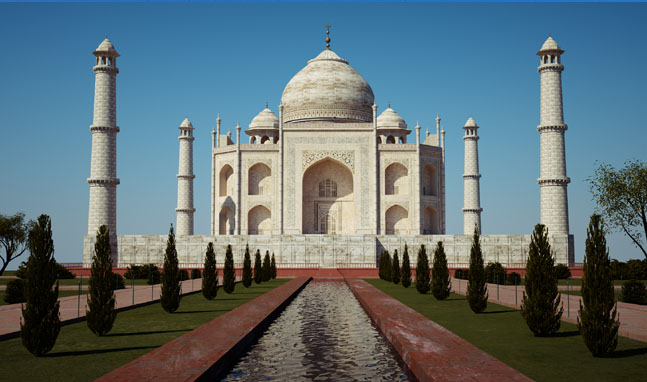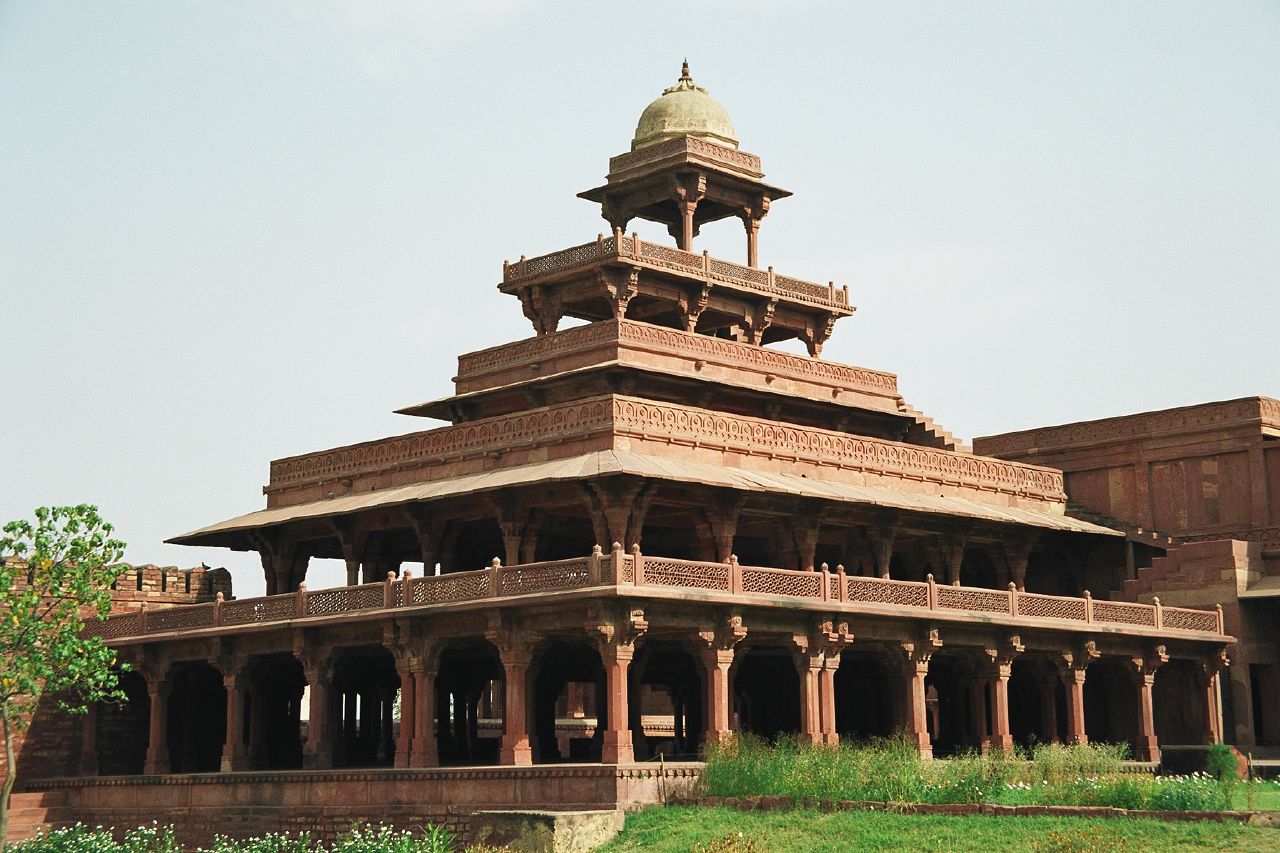 Agra Tour
Agra TourAgra is a city on the banks of the river Yamuna in the northern state of Uttar Pradesh, It is a major tourist destination because of its many splendid Mughal-era buildings, most notably the Taj Mahal, Agra Fort and Fatehpur Sikri, all three of which are UNESCO World Heritage Sites. Agra is included on the Golden Triangle tourist circuit, along with Delhi andJaipur.
The city was first mentioned in the epic Mahabharata, where it was called Agreva?a (derived from Sanskrit meaning "the border of the forest")Legend ascribes the founding of the city to Raja Badal Singh, a Sikarwar Rajput king (c. 1475), whose fort,Badalgarh, stood on or near the site of the present fort. However, the 11th century Persian poet Mas'ud Sa'd Salman writes of a desperate assault on the fortress of Agra, then held by the Shahi King Jayapala, by Sultan Mahmud of Ghazni.[4] It was mentioned for the first time in 1080 AD when a Ghaznavide force captured it. Sultan Sikandar Lodi (1488 - 1517) was the first to move his capital from Delhi to Agra in 1506. He governed the country from here and Agra assumed the importance of the second capital. He died in 1517 and his son, Ibrahim Lodi, remained in power there for nine more years and several palaces, wells and a mosque were built by him in the fort during his period. Finally being defeated at the Battle of Panipat in 1526.[5] Between 1540 and 1556, Afghans, beginning with Sher Shah Suri ruled the area. It achieved fame as the capital of the Mughal Empire from 1556 to 1658.
This is the personalized tour pickup in the morning from your hotel in Agra by Private A/c Transport & English Speaking Guide, Duration of Tour Approx 5-6 Hour . Taj Mahal, a UNESCO World Heritage site and one of the Seven Wonders of the World. Listen as your guide enlightens you with interesting stories behind this icon of India. Commissioned by Shah Jahan as a memorial to his third wife Mumtaz Mahal, the domed marble mausoleum took 20 years to build.
Your guide discusses this exemplar of Mughal architecture and share knowledge of its Persian designer. Then follow up with a visit to the Taj Museum, located in the surrounding Naubat Khana complex. This treasure trove of more than 100 artifacts including paintings, vases and coins, provides tremendous insight.
Take a look at the original architectural drawings and plans for the Taj Mahal complex, then drive to Agra Fort.
Next, learn about the intricate design of the 16th-century Agra Fort, which combines both Islamic and Hindu architectural styles. Built by Emperor Akbar on the banks of the Yamuna River, the fort is constructed of red sandstone. Walk around the complex to see the beautifully designed rooms like the Diwan-I-Am (public audience hall) and the Diwan-I-Khas (private audience hall), added by Shah Jahan.
Afterward, you're taken back to with drop-off at your hotel
Book Now
 Fatehpur Sikri Tour
Fatehpur Sikri TourFatehpur Sikri a city and a municipal board in Agra district in the state of Uttar Pradesh, India. The city was founded in 1569 by the Mughal emperor Akbar, and served as the capital of the Mughal Empire from 1571 to 1585.[1] After his military victories over Chittor and Ranthambore, Akbar decided to shift his capital from Agra to a new location 23 miles (37 km) W.S.W on the Sikri ridge, to honor the Sufi saint Salim Chishti.
The Imperial complex was abandoned in 1585, shortly after its completion, due to paucity of water and its proximity with the Rajputana areas in the North-West, which were increasingly in turmoil. Thus the capital was shifted to Lahore so that Akbar could have a base in the less stable part of the empire, before moving back to Agra in 1598, where he had begun his reign as he shifted his focus to Deccan.[6] In fact, he never returned to the city except for a brief period in 1601. In later Mughal history it was occupied for a short while by Mughal emperor, Muhammad Shah (r. 1719 -1748), and his regent, Sayyid Hussain Ali Khan Barha, one of the Syed Brothers, was murdered here in 1720. Today much of the imperial complex which spread over nearly two mile long and one mile wide area is largely intact and resembles a ghost town. It is still surrounded by a five mile long wall built during its original construction, on three sides. However apart from the imperial buildings complex few other buildings stand in the area, which is mostly barren, except of ruins of the bazaars of the old city near the Naubat Khana, the 'drum-house' entrance at Agra Road. The modern town lies at the western end of the complex, which was a municipality from 1865 to 1904, and later made a "notified area", and in 1901 had a population of 7,147. For a long time it was still known for its masons and stone carvers, though in Akbar time it was known and 'fabrics of hair' and 'silk-spinning'. The village of Sikri still exists nearby.
This is a 3-hour trip to Fatehpur Sikri, a UNESCO World Heritage site located an hour's drive away from Agra (on the highway to Jaipur). Fatehpur Sikri (the City of Victory) had only a brief glorious existence as the capital of the Mughal empire. In 1571, the Mughal Emperor Akbar the Great decided to build it at the site where the Sufi saint Salim Chishthi lived. The saint had successfully predicted the birth of Jahangir, Akbar's much-longed for son and heir. The Great Mughal took personal interest in the design and construction of his new city; but abandoned it after a mere 10 years to focus on his war against the Afghans (he chose a new capital, Lahore, in present day Pakistan).
In 1585, the English traveller Ralph Fitch described Fatehpur Sikri as "considerably larger than London and more populous". The City comprised a series of palaces, public buildings and mosques. There were living areas not only for the members of the Mughal court, but also for the army, tradesmen, merchants and ordinary folk. Only one small part of Fatehpur Sikri (where the large buildings and palaces are concentrated) has until now been studied, documented and relatively well preserved. The monuments are of red sandstone, built in a variety of eclectic styles freely borrowed from Hindu, Persian and Indo-Islamic traditions.
After Akbar's death, the City of Victory was once again briefly the site of the Mughal court for 3 unhappy months in 1619, when Akbars son Jahangir sought refuge there from the plague that devastated Agra. After this, Fatehpur Sikri was abandoned once again, until its archaeological exploration in 1892.
Book Now








